During this last year, I’ve worked with a local group in Stockholm The Design Leadership Community (DLC) on a survey targeting designers. In the survey, we’ve tried to understand what designers spend their day-to-day work on (design-wise, that is, we were not interested, for example, in how much of their day they spent in meetings. That can wait for another survey). The DLC is using this as a baseline to develop more meaningful job descriptions to help businesses, organizations, and designers. Last night we shared the results with 50+ designers in Stockholm.
This all began about a year and a half ago. I got an assignment from one of the Nordics largest financial firms to come in and do some one-on-one interviews and some prototype testing with customers. The firm was going through a major transformation and just before this transformation went live, someone had the good idea to check in with the customers affected by the change.
It was a pretty modest assignment. And yet…once I was inside I noticed there was a lot of resistance to talking directly with customers. This resistance came primarily, surprising to me, from people with titles like CX manager, UX designer, and UX lead. Their response was “Why do we have to do this? Can’t we just produce something and push it out live?”
Maybe I’m naïve but if you have the words Customer Experience or User Experience in your titles, I’m assuming that you would be interested in spending as much time with customers and users to figure out how the hell you should be helping to craft their experiences. Not so here.
After the assignment, I talked with DLC founder Jens Wedin and suggested that we do this survey together, an idea he agreed to. We ran this a year ago and I have to say that the results didn’t surprise me even if they bummed me out a bit.
What do designers do during work?
We built the survey based on the double or even triple diamond that we all know and sometimes love. A group of designers then suggested specific tasks to ask about. I would say the questions represented the diversity of the group more than anything else.
244 people responded to the survey. Most had the title UX Designer (39%) followed by Service Designer (11%) UX Lead (9%) and Product Designer (9%). 55% of respondents considered themselves senior, 26% as mid-level, and 13% as junior.
Here are some of my takes on the results, they are not the “official” analysis of the DLC, and they will release those shortly. I’ll highlight the most important ones below.
Survey Results
Please make note: these results show tendencies, not truths. It was a small sample and the results only point to places where we need to understand more. Here are some of my reactions to seeing these patterns.
Discovery Phase
We asked designers about the discovery phase. This was really my starting point with all of this. Do you spend time engaging with people before you start designing things?
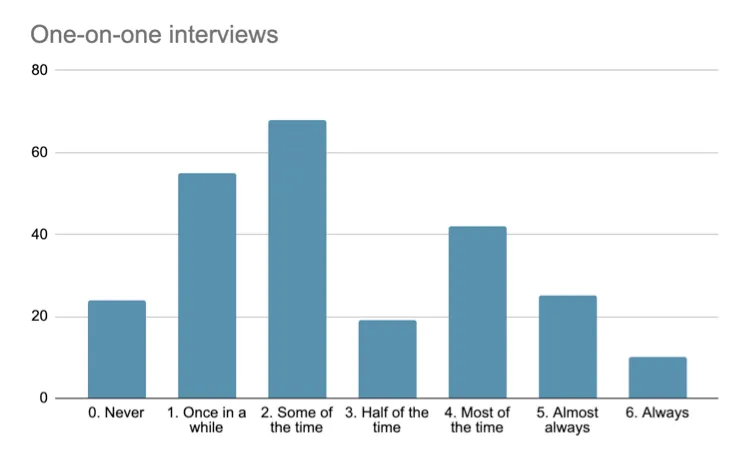
You can see that clearly less than half of designers regularly engage in the standard one-on-one interviews. Even service designers were not so much different than the overall results. This was a surprise to me as my experiences in Sweden have led me to expect that organizations treat service designers as their design researchers primarily.
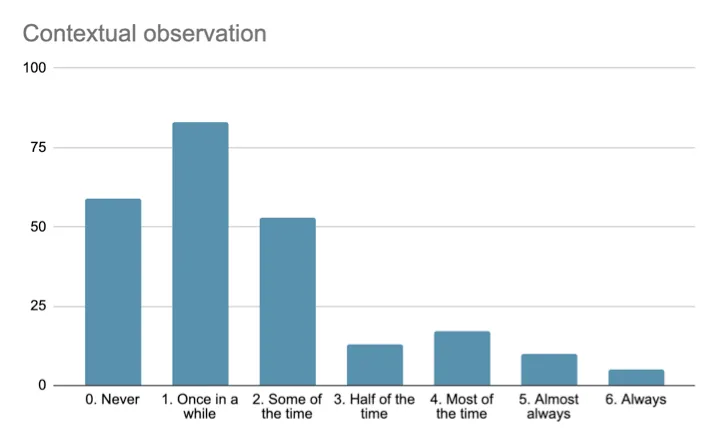
As you might assume, most of the people answering the survey work primarily in digital media. This would lead me to expect or hope that we’d see higher results for contextual observation, a classic digital research tool. But really almost no one was doing this.
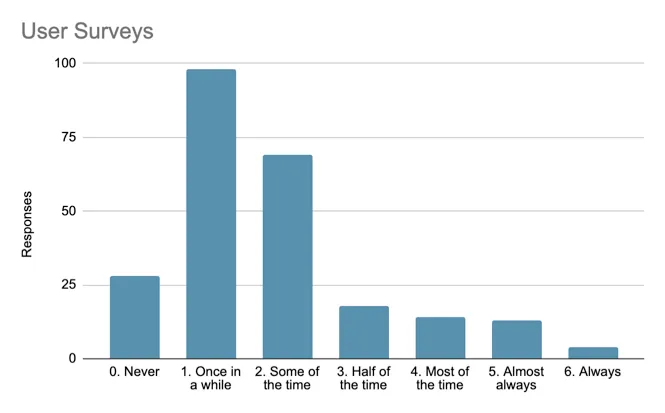
We asked about other user research tools; here for example are the results for user surveys, I thought this would also be higher in our digitally focused age. But few designers are doing even that.
Define phase
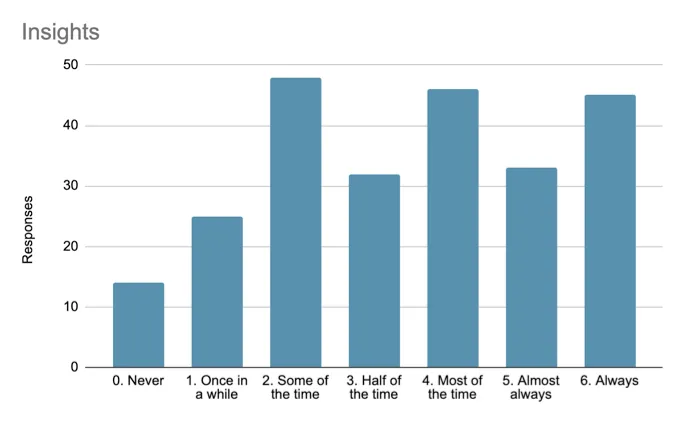
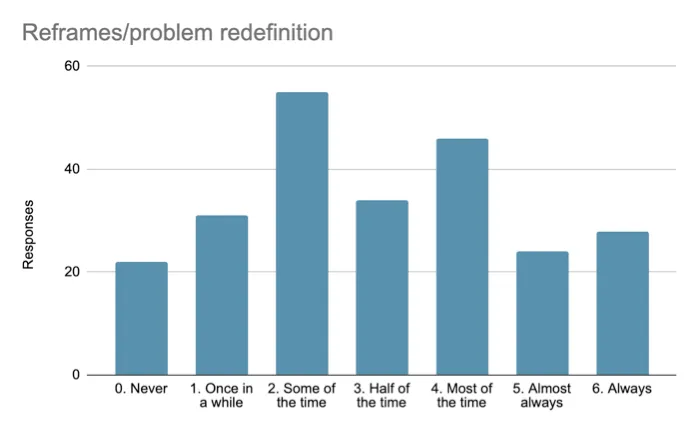
Despite not engaging in much user research, a majority of designers answered that they regularly created insights and reframes. And the question I have is: based on what? If designers are not doing research then that must mean that the defining work of insights, reframes and others is based on assumptions or something else. Web analytics?
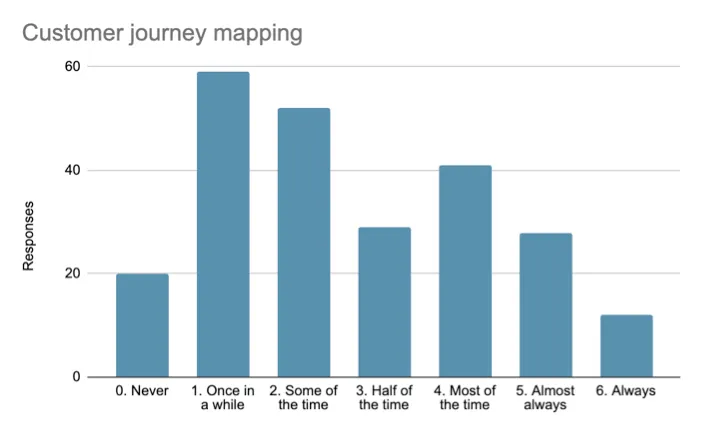
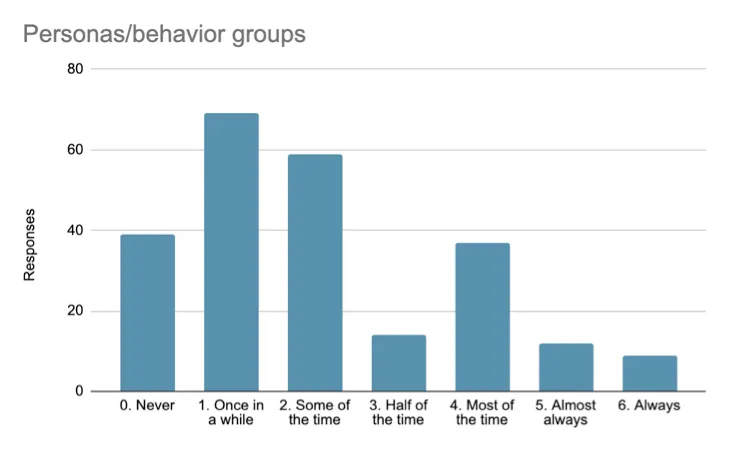
A minority is doing customer journey maps and even fewer are creating personas or behavioral groups. It may be that the minority that IS doing customer research is also doing these two definition work but we didn’t slice the data enough to see that.
Second Diamond — Develop
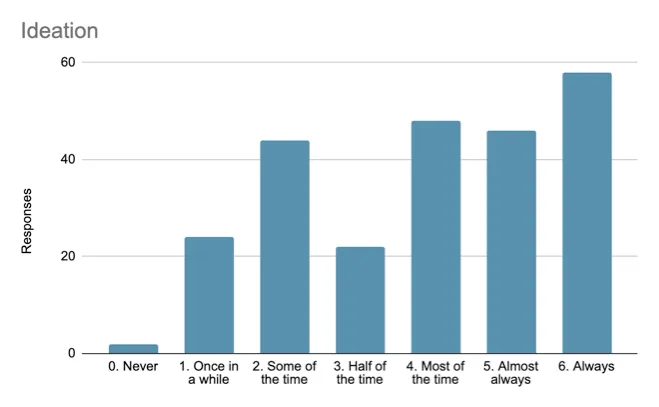
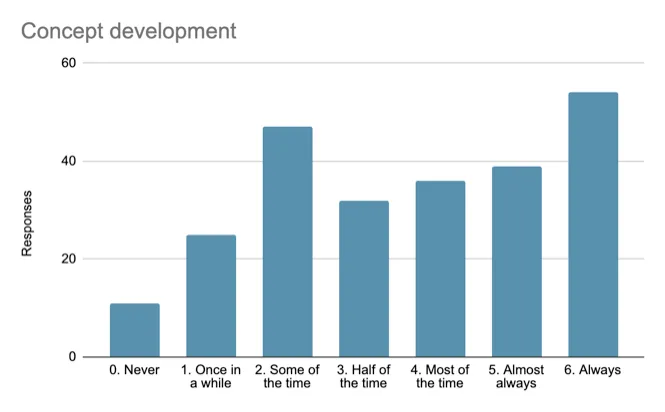
Not surprisingly, when we get into the “doing” we find stronger responses. Designers are ideating and developing concepts. As they always have and always will. Again, the question lingers: based on what — if there is little user research? We’re starting to get into “the more things change, the more they stay the same” phase of the survey.
Second Diamond — Prototype and test
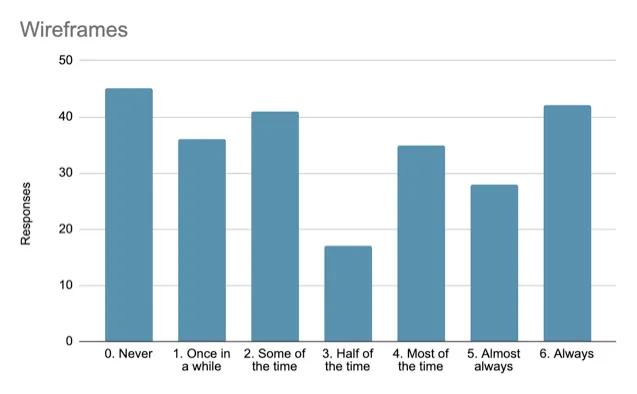
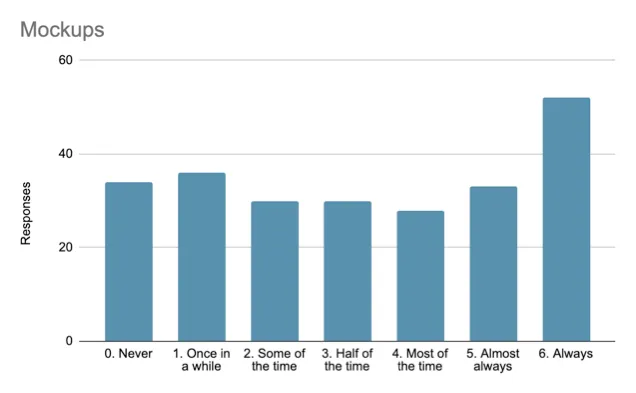
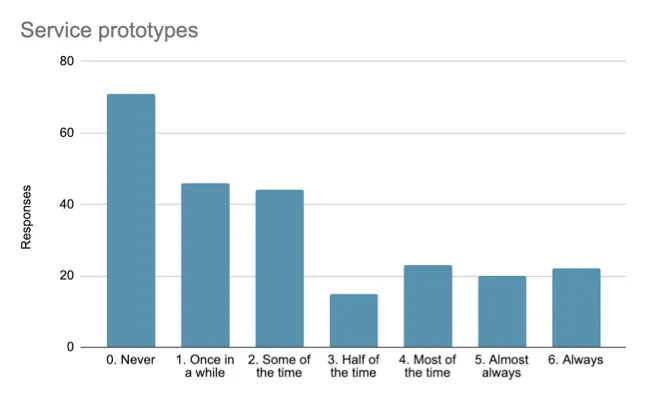
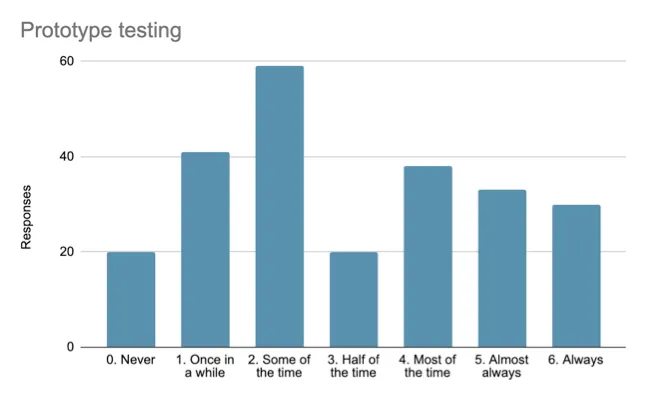
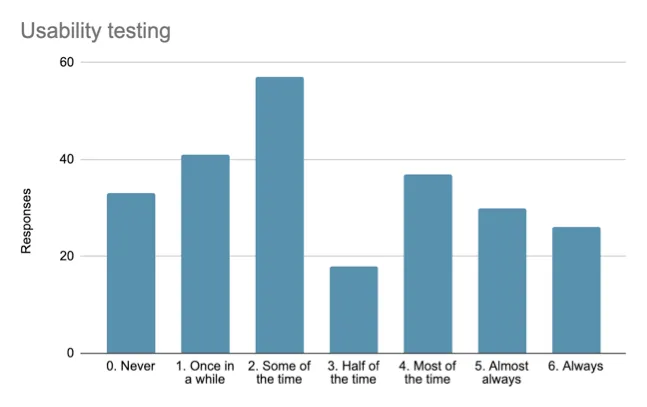
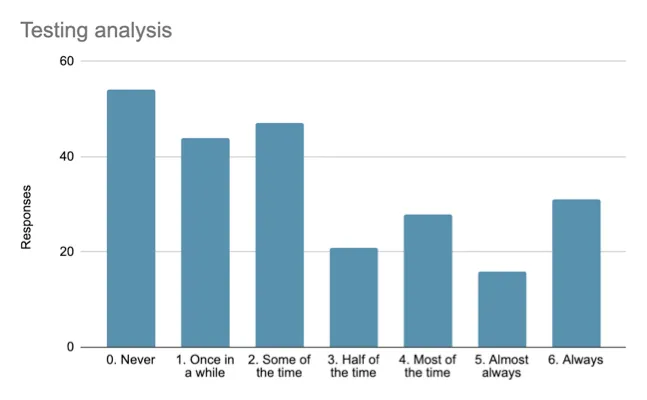
Only a minority is testing them with users and even fewer are analyzing those results. Steve Krug must be turning over in the Chestnut Hill Mall. (Back in my digital days I used to make every one of my designers read “Don’t Make Me Think” starting in 1999. It makes me a little sad that we’re still having this challenge).
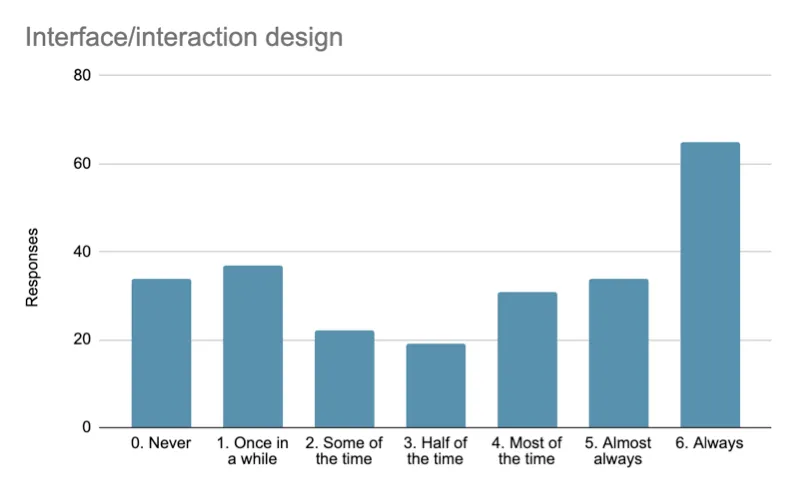
Actually, this was the strongest positive response to the survey.
What Do I Conclude from this?
- Most designers with various titles spend most of their day-to-day work creating visuals for various media.
- Despite the titles with a focus on User, Customer, or Service, few designers spend significant amounts of time interacting with users, customers, or people using the services they are designing
- While design has a wide range of processes and tools, it looks like designers only use a few of them on a daily basis.
Despite the ongoing development of more human-centered design education and operations most designers spend minimal time interacting with users/customers/citizens as part of their everyday work.
If we had run this survey 20 years ago, most designers would’ve had the title Graphic Designer or Art Director and they would have designed primarily for print media. Since then we’ve seen the amazing rise of digital, along with Design Thinking, Lean Startup, and Agile. All of those place a premium on interacting with and testing with customers.
In the last 20 years, we’ve also seen a shift of titles from Interactive Designer to Digital Designer to UX Designer. The premise of digital was two-way rather than broadcast. That seemed to demand a different approach to design, one that was more people-focused. We’ve also seen a consolidation of design firms being bought up by consultancies who wanted and needed to grow their digital capabilities. It seems like there has been quite a bit of title inflation. If the survey is any indication, designers work primarily as digital or interface designers. CX and UX sound much more strategic and maybe they allow firms to bill at higher rates than for digital designers. But it doesn’t look like the work itself has shifted as much as we thought.
This is bad for two reasons. For one, it means that most companies and organizations are still not as customer, user, or people-focused as they should be, or as they claim to be. There is a high level of Design-Washing happening. For another, we’ve shifted a lot of our design education to include customer-focused design thinking, lean or agile — we are training designers to expect this in their work lives only to disappoint them when they actually get jobs. Shame on us.
For people who follow Jared Spool and others, none of this should be a surprise. I think, though, it is surprising in Sweden where there is an assumption that we do things better here (Swedish exceptionalism anyone?). But the survey results show a strong tendency that things in Sweden are just like they are everywhere else.
I for one am looking forward to seeing what the DLC does with this going forward and if they are able to change the way organizations use designers in order to become more customer-focused — both for private and public organizations.








